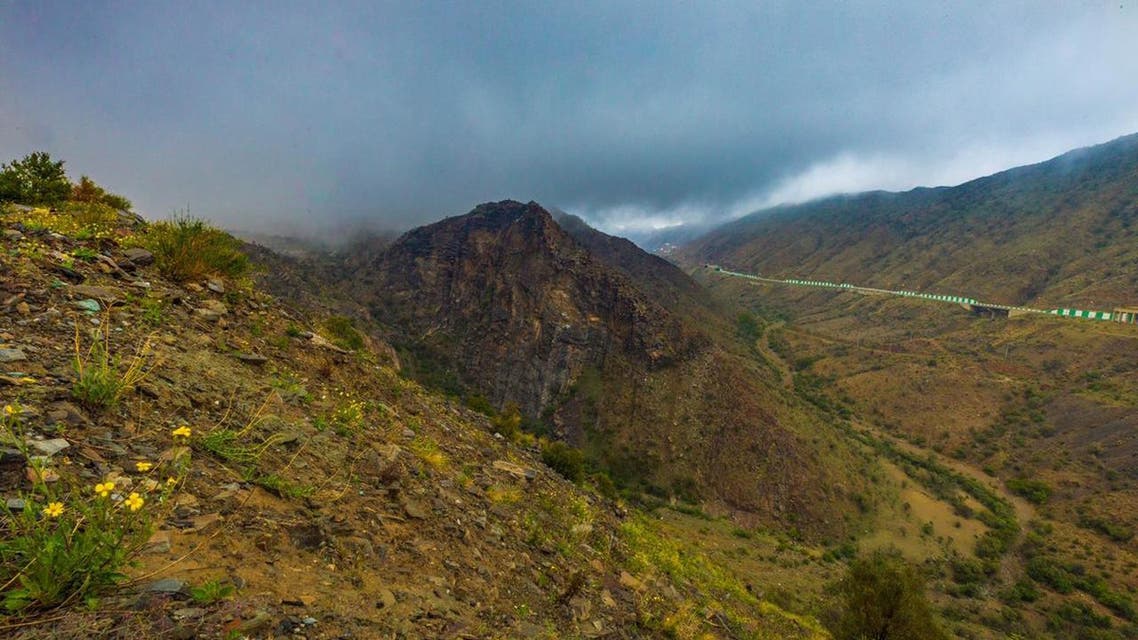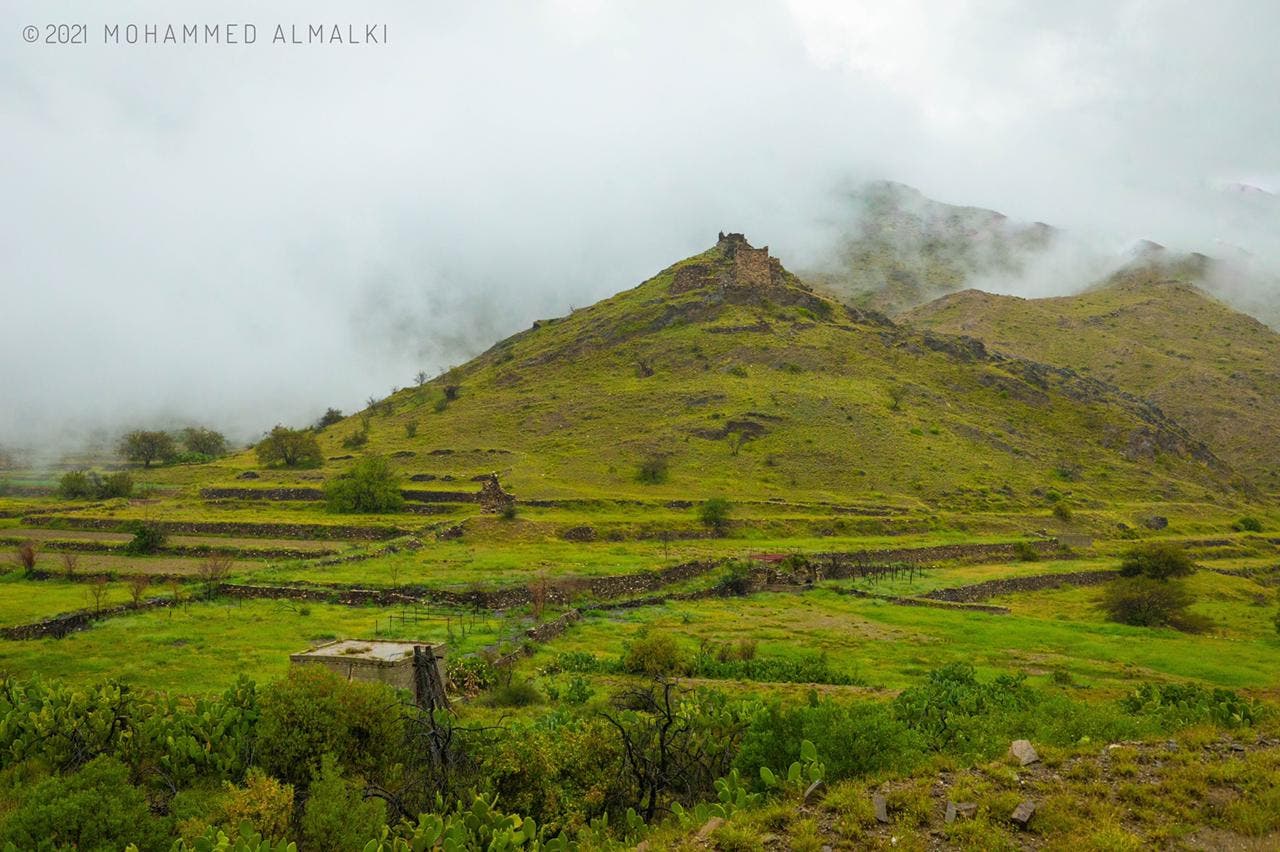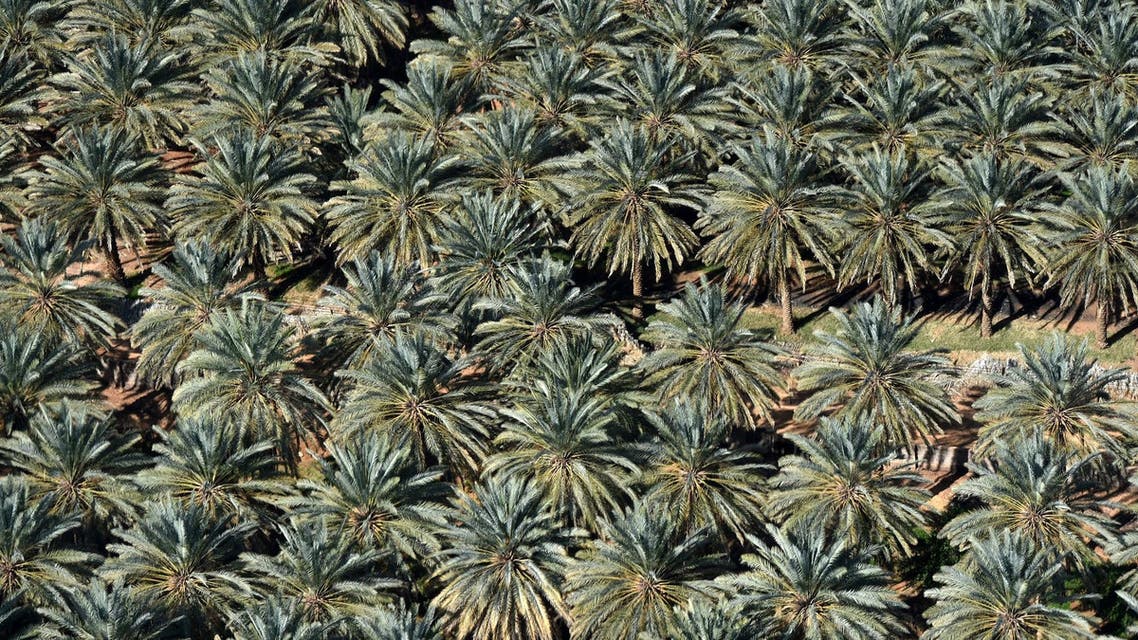
Green mountains in Saudi Arabia. (Supplied)
Emile Amin Published: 31 March ,2021:
At the initiative of Crown Prince Mohammed bin Salman, the Kingdom of Saudi Arabia announced two initiatives that will serve as the cornerstone for efforts aimed at protecting Earth and nature in the Kingdom and the region respectively. These initiatives, which will be crystallized in the few coming months, are a continuation of the Kingdom’s leading role vis-à-vis common international issues, as well as its efforts to protect the planet, which it had outlined last year during its G-20 presidency.
Centered in the Kingdom and the region of the Middle East, the initiatives seek to plant 10 billion trees inside the Kingdom and double that number in the region in the coming decades.
The main objective is clear as day: saving Earth from the frightening destiny that awaits it, especially if global warming rates are to maintain their current rise, not to mention all the disturbing climate disasters that would ensue. Not least of these are the sandstorms that constantly befall the region, costing the Kingdom alone nearly $13 billion every year.
Climate change, now a bigger threat than even weapons of mass destruction, does not only harm Earth itself, but also its inhabitants. According to scientific studies conducted in the Kingdom, air pollution due to greenhouse gases is estimated to have shortened the lifespan of Saudis by one and a half years.

The initiatives of Crown Prince Mohammed bin Salman prefigure a new green age that will grow and elevate the Gulf and the Middle East. These initiatives will come as part of concerted international efforts to breathe life into the planet instead of watching it die. The time for a green era has undoubtedly come.
One may wonder, however, whether tree planting can indeed make a dent in our climate crisis, especially given the lack of any positive, effective steps by major industrial powers around the world to fight the current and future repercussions of climate change.
Perhaps the only positive effort made recently in this regard was by the US as it rejoined the Paris Agreement, the same agreement from which the former administration had withdrawn in protest of the US bearing the brunt of the economic burden of combating the climate crisis while other countries accumulate wealth without taking care of Mother Earth. This is where the Crown Prince’s initiative become vital; they will add positive, innovative, and real value to the path of healing the planet. After all, trees are the lungs of the Earth.
In late September, a team of forest management experts at the US Department of Agriculture released a study proving the importance of planting trees to redress the environmental balance as global carbon emissions are still on the rise all around the world. Forests, as the study suggests, can help alleviate the situations as they enable greater carbon sequestration.
In the report, research forester Professor Grant Domke speaks of the role of tree planting in enhancing the ability to provide several ecosystem services. In addition to carbon sequestration, afforestation allows soil stabilization, the provision of wildlife habitats, and improved groundwater quality.
His Highness’ two initiatives are evidence of his foresight and cosmologic vision of the changes taking place in a world based on non-enlightened pragmatism. Several forests around the world have been mowed down with the sole purpose of making a fast buck, despite the fact that all economic revenues from wood products account for more than 14 percent of the yearly economic cost of carbon dioxide emissions in a country like the United States. One can only imagine the extent of damage such thoughtless, incautious policies have caused for future generations.
Day after day, the projects and initiatives of Crown Prince Mohammed bin Salman prove his progressive vision for development and advancement, not only in the Kingdom, but across all the Gulf and, by extension, the Middle East.
These green initiatives are part of the Kingdom’s Vision 2030, which is based on innovation instead of imitation. As a leading global oil producer, the Kingdom also realizes its responsibility in driving the efforts to combat climate change. Just as it plays a pioneering role in stabilizing energy markets during the oil and gas era, the Kingdom will strive to lead the upcoming green era.
These Saudi initiatives serve as a model proposal that seeks ecological justice for all of humanity and wards off the phantom threatening millions with inequality, exclusion, and deprivation of basic human rights, like clean water, unpolluted air, and proper nutrition.
Furthermore, not only will these initiatives work towards the reduction of global carbon emissions by over 4 percent, but they will also save 50 percent of electricity production costs in the Kingdom by 2030 thanks to renewable energy projects.
Armed with world-class power and leadership, Saudi Arabia heralds the Green Era; an era of combating climate change and addressing the environmental risks that the future holds.
This article was originally published in, and translated from, the pan-Arab daily Asharq al-Awsat.
https://english.alarabiya.net/in-translation/2021/03/31/Saudi-Arabia-and-the-green-era
Green Middle East vs. Nuclear Middle East – Al Arabiya

An aerial view of palm trees in the Ula desert near the northwestern Saudi town of al-Ula on February 11, 2019. (AFP)
Abdullatif al-Dwaihi Published: 14 April ,2021
It is imperative that the Saudi Green and Middle East Green initiatives be launched to serve as an Arab program that counters the Israeli and Iranian nuclear programs in the Middle East. Our region cannot tolerate a tighter nuclear arms race; rather, it needs a peace project race.
Arab states and peoples make up the majority of the Middle East, and this majority was sufficient to keep the countries and peoples of the region uninvolved in nuclear activities, enjoying a culture of reconciliation, peace, and stability throughout history without the need for nuclear programs. This was disrupted when Western countries implanted colonial entities serving occupation agendas in our region that were completely alien to our culture and morals. These Western colonial countries even brought in packaged belief systems that are foreign to their own doctrines, which they claim to represent and revere. This is when a nuclear arms race emerged between an entity that usurped the land and a system that usurped the people.
Saudi Arabia’s mission, by launching the Middle East Green initiative announced by His Highness Crown Prince Mohammed bin Salman, is no easy task. The country is building and embodying a culture of peace with its green project, green awareness, and green weapons in a region whose cities have become a den of fear, its relations full of mistrust, and its streets a battleground ruled by militias and mercenaries. This region has dwindled to the point of filling the seas of the world with ships of forlorn refugees and immigrants.
Saudi Arabia holds considerable weight in the Middle East and the world in terms of oil production and manufacturing, as well as being an important Arab and Islamic hub. Now it is taking on an ambitious environmental project, launching the Middle East Green initiative with the planting of 50 billion trees. This is the largest reforestation program in the world, restoring 200 million hectares of deteriorated land, which represents 5 percent of the global goal, and reducing carbon emissions from oil production by 60 percent to keep pace with joint global efforts to reduce carbon emissions.
The recent attack on the Iranian nuclear facility, Natanz, is just another episode in the Israeli-Iranian nuclear arms race in the region and the world, which will bring neither of them the security they dream of, especially when compared to the size of the Arab land and population that both the Israelis and Iranians fear. Therefore, the nuclear arms race in the Middle East is much more dangerous than those in the Far East and the Indian continent for two reasons: first, the Iranians’ intense quest for natural resources in a number of countries in the region, and second, the extent of the historic hatred that both nuclear powers harbor against all things Arab. The massacres committed by Israel and Iran against the Arabs in times of war and in times of peace demonstrate the rancor and racial hatred of these unfriendly neighbors.
Besides its challenge to the two states engaged in a nuclear arms race, the Middle East Green initiative poses yet another challenge to the countries seeking to draw benefit from the rivers that flow in Arab countries. Israel, Iran, Turkey, and Ethiopia have all used everything they can in order to cut off the water supply to Arab countries, which are punctuated by rivers. However, the Middle East Green initiative comes from an Arab country that does not have an abundance of water. So, will the Middle East Green initiative pull the rug out from under the enemies of the environment and the enemies of peace?
This article was originally published in, and translated from, Saudi newspaper Al Okaz.
https://english.alarabiya.net/in-translation/2021/04/14/Green-Middle-East-vs-Nuclear-Middle-East
